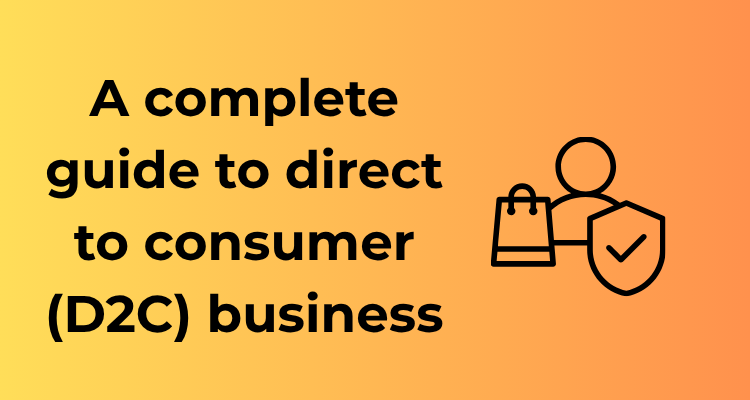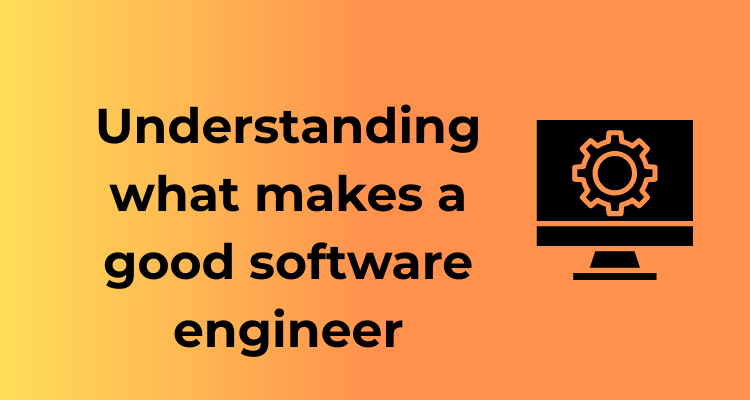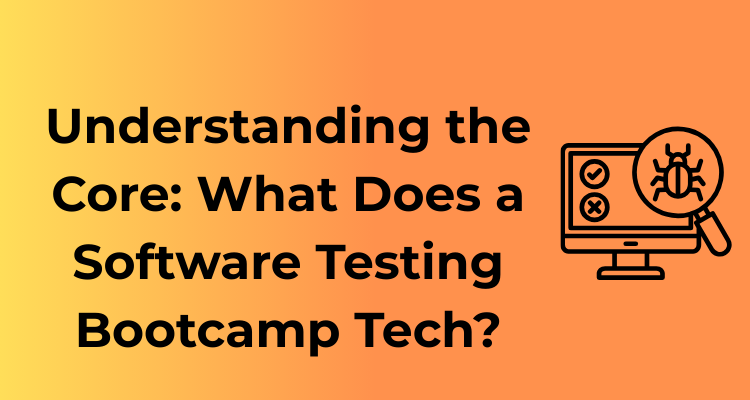Welcome to the world of Direct-to-Consumer (D2C) businesses—a growing trend that’s taking the retail and e-commerce sphere by storm! If you’ve been wondering what this term actually means and why it’s buzzing with potential, you’re in the right place. Sit back and let’s dive into what makes small brands in the D2C space such big game-changers.
At its core, D2C means a brand sells products directly to its customers, cutting out middlemen like wholesalers, retailers, or distributors. Imagine you’re a small soap-making business. Traditionally, you’d have to work with retailers or large chains to get your products on shelves. With the D2C model, however, you could take your handmade soaps straight to the customer via your website or social media. Sounds empowering, right?
This model isn’t just about bypassing traditional brick-and-mortar stores. It’s a revolution in how businesses connect with customers on a personal level and grow their brands on their own terms.
Why D2C Is More Than Just a Trend
D2C businesses have fundamentally reshaped the retail industry by giving smaller brands a seat at the table. Here’s why:
- Control: D2C brands have full control over their product pricing, branding, and customer experience. You’re the boss of your story!
- Cost-Efficiency: With fewer intermediaries, brands can reduce costs and pass savings to their customers—or reinvest in their business.
- Personalization: Selling directly to consumers allows brands to customize the shopping journey, from packaging to follow-up emails, fostering a deeper connection.
When done right, a D2C approach allows even the smallest brands to compete with industry giants by offering something unique, relatable, and valuable.
Examples of D2C in Action
Let’s talk relatable examples! Have you heard of brands like Warby Parker or Glossier? These are classic D2C success stories. Warby Parker disrupted the eyewear market by selling stylish glasses directly to their customers online at affordable prices. Meanwhile, Glossier captured hearts by building a passionate community around its beauty products. Both brands skipped the retail chains and turned their direct relationship with consumers into a thriving success.
But it’s not just big names benefiting from this approach. Small businesses around the globe are proving that you don’t need millions of dollars to create an unforgettable customer experience and win loyalty. Whether you’re a crafting expert, a food innovator, or a tech whiz, D2C opens up opportunities like never before.
Why It Matters Today
The surge of e-commerce has made D2C even more relevant. Modern-day shoppers are tech-savvy and value authenticity. They’re looking for brands that align with their ideals and deliver personalization. By moving online and going direct-to-consumer, small brands have a golden opportunity to connect in meaningful ways.
How Skipping the Middleman Can Boost Business Growth

Let’s talk about the magic of cutting out the middleman. At first glance, it might sound like a risky move, but for direct-to-consumer (D2C) brands, skipping those intermediaries can ignite some serious business growth. The D2C model isn’t some passing craze—it’s a smart, strategic move with benefits that can transform operations and profitability. Let’s dive deeper!
Why Skip the Middleman?
Traditional businesses often depend on intermediaries like wholesalers, retailers, and distributors to get their products in front of customers. But here’s the kicker: each of these steps eats away at your profits and limits your ability to control how your brand is represented. This is where the D2C model shines.
In D2C, the brand acts as the maker, seller, and communicator—removing the layers in the process. This direct approach isn’t just about cutting costs (although that’s a major perk); it’s about connecting with customers on a personal level and delivering exactly what they want.
Key Benefits of Skipping the Middleman
By eliminating intermediaries, D2C brands unlock significant opportunities. Let’s break it down:
- Higher Profit Margins: Without distributors or retailers taking a cut, businesses get to keep more of their revenue. Every sale directly benefits the brand, boosting profitability.
- Total Brand Control: Want to create a unique unboxing experience or craft messaging that reflects your values? With no middleman, you set the tone for how customers perceive your brand.
- Faster Feedback Loops: Instead of waiting for third-party reports, you engage directly with your customers. This allows for real-time feedback, quick pivots, and products that truly resonate.
- Personalized Customer Experiences: Building a relationship with your audience becomes seamless when you own the customer interaction. From custom email campaigns to curated product recommendations, personalization is at your fingertips.
Let’s Talk Numbers
D2C brands, by cutting traditional supply chains, often see impressive savings. For example, think about the retail markup that’s no longer in the equation. Brands like Warby Parker and Allbirds have famously thrived using the D2C strategy, disrupting markets while growing loyal communities. By owning their sales channels and avoiding high retailer overheads, they’ve maximized efficiency while pricing competitively for customers.
Strategic Considerations
While skipping the middleman sounds amazing, it does come with responsibilities. In this model, the business takes charge of everything—production, logistics, marketing, and customer service. To succeed, brands need to prioritize:
- A Stellar Digital Presence: Your website and social media are your storefronts. Invest in user-friendly designs, compelling content, and strong SEO strategies.
- Efficient Logistics: Seamless order fulfillment and quick shipping are a must. The faster your customer gets their order, the happier they’ll be.
- Customer Support: Without a retailer buffer, customers turn to you for questions and complaints. Exceptional service builds trust and loyalty.
Making It Work
Transitioning to (or starting with) a D2C model can feel overwhelming, but remember: success lies in embracing the direct connection. Listen to your audience, stay adaptable, and don’t shy away from trying new strategies. With dedication, skipping the middleman can catalyze incredible growth—not just for your bottom line, but for the lasting relationships you’ll build with your customers.
Key Traits That Set D2C Businesses Apart from Traditional Models
Let’s talk about what makes Direct-to-Consumer (D2C) businesses so unique! These aren’t just your run-of-the-mill businesses operating like traditional retail giants or relying heavily on third-party distributors. D2C brands are flipping the script and carving out their own path with some game-changing traits. Ready to dive in? Let’s go!
1. Direct Customer Relationships
Unlike traditional retail models where brands often lose touch with their end-users, D2C businesses go all-in on building direct connections with their customers. Imagine having a front-row seat to your customer’s preferences, feedback, and habits—this is exactly what D2C brands prioritize! By cutting out the middleman, they get the chance to really dive into understanding who their customer is and what they want.
Brands like Glossier or Warby Parker have nailed this, often engaging with their customers on social media, responding to feedback in real-time, and adapting their offerings to align with customer needs. This direct interaction is what sets D2C apart—it’s personal, dynamic, and, frankly, pretty exciting.
2. Full Control over the Brand Experience
D2C businesses thrive because they own their storytelling. From a brand’s website to its packaging and customer service, everything is designed to reflect the company’s unique identity. Traditional businesses often have to compromise on branding to fit within the framework of a retailer, but not here.
Think about how Nike launched its D2C channels—now they go beyond selling products, creating an immersive experience through apps, personalized shopping, and even fitness communities. This ability to control every touchpoint lets D2C businesses deliver a consistent and memorable experience that keeps customers coming back for more.
3. Data-Driven Decision Making
Got data? D2C businesses sure do. One of the biggest advantages of going direct-to-consumer is the treasure trove of customer data brands collect. Every interaction—whether it’s a site visit, purchase, or customer support query—feeds valuable insights back to the business. With tools like Google Analytics, CRM software, and more, brands can constantly fine-tune their strategies.
Compare this to traditional models, where much of the consumer behavior data remains with the retailer. D2C flips the script, empowering businesses to make smarter, faster decisions based on real-time info. From personalized product recommendations to tailored marketing campaigns, the possibilities are endless.
4. Focus on Agility
Let’s face it—traditional models often suffer from red tape and slow decision-making. D2C businesses, on the other hand, thrive on their ability to be nimble. This is especially important when trends change overnight or you’re faced with unexpected challenges (hello, global pandemic!). Because they control their entire operation, D2C brands can pivot almost effortlessly.
Take Gymshark for example. They’ve mastered the art of staying agile, responding quickly to trends in activewear, and launching new collections that perfectly align with what their audience is craving at the moment. Being flexible isn’t just a strategy—it’s a superpower in the D2C world.
From Social Media to Sales: Building Strong Consumer Connections

Social media has revolutionized the way businesses connect with their customers, especially for Direct-to-Consumer (D2C) brands. Imagine having a direct line to your audience, where their feedback, preferences, and engagement drive your decisions. In today’s digital-led world, the journey from social media post to an actual sale is seamless, but only if you know how to navigate it effectively.
Why Social Media Is a Game-Changer for D2C
Unlike traditional business models, where layers often separate brands from consumers, D2C thrives on direct, personalized interactions. Social media is the perfect stage for this level of connection. Platforms like Instagram, TikTok, and Facebook allow businesses to humanize their brand, creating relatable content that resonates with potential buyers in real time.
Think about it: a well-crafted Instagram post or a 30-second TikTok can capture a viewer’s attention faster than any traditional advertisement. With the sheer number of people scrolling online daily, the opportunity to go viral and turn followers into loyal customers is unmatched.
Steps to Build Strong Consumer Relationships on Social Media
Want to turn your social media presence into a sales powerhouse? Here’s a roadmap:
- Know Your Audience: Start by understanding who you’re trying to reach. What platforms do they spend the most time on? What kind of content do they love? Answering these questions will guide your strategy.
- Engage Consistently: Connection isn’t a one-and-done process. Regularly post meaningful content that reflects your brand’s voice and values. Whether it’s tutorials, behind-the-scenes shots, or user-generated content, make your audience feel included.
- Utilize Stories, Reels, and Live Streams: These features encourage immediate interaction and help to foster an authentic connection. Let people see the human side of your business—it’s more impactful than glossy perfection.
- Leverage Influencer Marketing: Collaborating with influencers who align with your brand can help expand your reach. People trust recommendations from their favorite creators, and this trust is what drives conversions.
- Respond and React: Customers love when brands are responsive. However, don’t just react to positive comments—address criticisms thoughtfully too. Transparency builds trust.
Turning Engagement into Sales
Simply building a strong social presence isn’t enough. The true magic happens when you nurture those likes, shares, and comments into tangible sales. Here’s how:
- Seamless Shopping Experience: Use tools like Instagram Shops, Pinterest Buyable Pins, or TikTok Shopping to remove any barriers between your posts and purchases.
- Exclusive Offers and Discounts: Promote time-sensitive deals or early access sales via social media. People often experience FOMO (fear of missing out) when they stumble on limited-time opportunities.
- Retarget via Social Ads: Ever noticed how an item you checked out earlier on a website magically shows up as an ad later? That’s retargeting, and it works wonders for rekindling interest.
Essential Tools and Platforms for a Thriving D2C Strategy
So, you’re stepping into the exciting world of Direct-to-Consumer (D2C), skirting traditional retail middlemen to build stronger connections with your customers. That’s fantastic! But let’s be real—going D2C isn’t exactly a walk in the park. The good news? The right tools and platforms can make the journey smoother and way more effective. Think of these tools as your digital Swiss army knife—they’ll help you streamline operations, engage consumers, and maximize sales. Let’s dive in, shall we?
1. Build Your Digital Storefront
First things first: you need a solid, attractive online home for your brand. A platform like Shopify, WooCommerce, or BigCommerce can make this happen with minimal hassle. These platforms are easy to use, visually customizable, and perfect for helping people “window shop” from their screens.
- Shopify: Great for beginners with loads of plug-and-play tools.
- WooCommerce: Perfect for those who already love WordPress and want flexibility.
- BigCommerce: Built for growth, especially if you plan to scale quickly.
Pro Tip: Ensure your storefront is mobile-friendly! Chances are, at least half of your potential customers will visit via their smartphones.
2. Social Media Management & Engagement
Let’s face it—social media is where your audience lives. They scroll, double-tap, and comment, so you should meet them there. Tools like Hootsuite, Buffer, or Later allow you to schedule posts, monitor performance, and engage with your audience, all in one place.
- Use Hootsuite for a bird’s-eye view of all your social networks.
- Try Buffer for simple scheduling and analytics.
- Later is fantastic for Instagram-heavy brands, with visual tools for arranging content grids.
Don’t underestimate the power of listening tools either! Software like Sprout Social lets you track mentions and customer sentiment, which can be pure gold for refining your messaging and staying relevant.
3. Customer Relationships Made Easy
In the D2C game, you want customers to feel like they’re more than just a statistic—they’re part of your brand’s story. Enter CRM (Customer Relationship Management) tools. Think of platforms like HubSpot, Klaviyo, and Salesforce as your behind-the-scenes magician. They help you keep track of customer interactions and deliver personalized communication that can turn a one-time buyer into a raving fan.
For instance, using Klaviyo, you can send targeted email campaigns based on user behavior, like abandoned-cart reminders or special birthday offers. With tools like these, you’re not just selling; you’re building long-lasting relationships.
4. Streamline Operations with All-in-One Solutions
There’s nothing glamorous about running out of inventory unexpectedly, right? Tools like NetSuite, TradeGecko (now QuickBooks Commerce), or Oberlo can handle backend logistics like inventory management and product sourcing.
- NetSuite: A comprehensive system for larger-scale D2C businesses that need both inventory and accounting aids.
- TradeGecko: Perfect for syncing stock levels across marketplaces if you also sell on platforms like Amazon.
- Oberlo: Built for dropshippers who need products from suppliers shipped directly to customers.
5. Leverage Analytics to Stay Ahead
Knowledge is power. The more you understand about your customers’ shopping habits, the better your strategy will be. Tools like Google Analytics, Hotjar, and Crazy Egg can help you dig deep into user behavior on your website, pinpoint pain points, and optimize every aspect of your funnel.
For example:
- Google Analytics: Track website traffic and conversions with detailed reports.
- Hotjar: Understand how guests interact with your site using heatmaps and session recordings.
- Crazy Egg: A/B test your landing pages to find what really works.
The Role of Inventory and Order Management in D2C Success
Are you dreaming of starting a Direct-to-Consumer (D2C) business or looking to improve the one you’ve already launched? Among the various pieces of the puzzle, inventory and order management might quietly be the most important—and game-changing—part of your success. Let’s break it down, step by step, in a way that’s easy to digest and, dare I say, fun!
Why Inventory and Order Management Matter
Let’s think about inventory and orders as the heartbeat of your business. If you’re not managing your stock levels efficiently or your orders are piling up inaccurately, you’ll quickly find yourself in a pickle. Imagine this: a hot-selling item runs out because you didn’t keep track of the inventory. Goodbye, sales (and possibly, loyal customers)! Or worse, orders get delayed or shipped incorrectly. Double ouch!
Good inventory and order management:
- Keeps your customers happy by ensuring timely deliveries.
- Saves your business money by avoiding overstocking or understocking.
- Creates trust and credibility—crucial ingredients for D2C success.
Tips for Rock-Solid Inventory Management
Managing inventory doesn’t have to be complicated, even if you’re a growing D2C brand. Here’s how to make it work without giving yourself a headache:
- Use inventory management software: Automating your inventory tracking makes life so much easier. Platforms like Shopify, NetSuite, or TradeGecko can help streamline this process so you can focus on growing your brand.
- Audit regularly: Set a habit of checking your inventory regularly to ensure that what you think you have matches reality. Trust me, counting those boxes now can save big heartburn later!
- Forecast demand: Seasonal trends, marketing campaigns, or even social media buzz can skyrocket demand. Use historical data or analytics to make sure you’re ready for those surges.
Getting Orders Right, Every Time
In the D2C world, your customers know they’re buying directly from you—no wholesalers, no middlemen. This means their expectations are sky-high! Meeting those expectations starts with nailing your order management process:
- Optimize your shipping strategy: Partner with reliable shipping services and offer multiple delivery options. Customers love flexibility!
- Communicate, communicate, communicate: Keep customers updated at every step—from order confirmation to shipment tracking. You’d be surprised how far a simple email notification can go in building trust.
- Stay organized: Avoid mix-ups by using order management tools or software. These tools can sync your online sales channels, track shipments, and handle returns like a pro.
The Golden Rule: Customer First
If you take away one thing from this, let it be this: happy customers = successful business. Whether it’s accurate order updates, in-stock products, or speedy shipping, great inventory and order management build the foundation for excellent customer experiences. And you know what they say about happy customers—they come back for more and bring their friends along.
Challenges D2C Business Owners Face—and How to Overcome Them
Running a Direct-to-Consumer (D2C) business is undoubtedly rewarding, but let’s face it, it’s not all smooth sailing. Whether you’re just starting out or scaling your operations, challenges will pop up like pesky weeds in a flourishing garden. The great news? Armed with the right strategies, you can tackle these hurdles head-on and keep your business thriving. Let’s dive into some common obstacles and how to overcome them like a pro!
1. Breaking Through a Crowded Market
If you feel like you’re shouting into a vortex of other brands saying, “Look at me!”—welcome to one of the biggest D2C challenges. The market is crowded, and gaining visibility can be tough.
- Solution? Define your niche. Zeroing in on what makes your brand stand out is key. Do you have sustainable practices? A quirky sense of humor in your branding? Lean hard into it.
- Double down on storytelling. Customers connect with brands that have a compelling story. Share your “why” through social media, emails, or your website to draw people in.
Remember, it’s less about beating others and more about creating your unique space in the universe of products.
2. Managing Customer Expectations
Ah, the modern consumer. They’re savvy, demanding, and a little impatient (we’ve all been there!). In a D2C business, your direct relationship with customers means you’re their one-stop shop for product quality, shipping, and communication.
- Be upfront. Clear and transparent communication is everything. Offer accurate shipping timelines, realistic descriptions of your product, and quick responses to questions or complaints.
- Under-promise, over-deliver. Want to dazzle your customers? Anticipate their needs and exceed their expectations whenever possible. A surprise discount or a handwritten thank-you note can go a long way.
Yes, it’s a lot of effort, but satisfied customers have a habit of becoming loyal fans.
3. Logistics and Scaling Pains
As your D2C business grows, managing inventory, shipping, and order fulfillment becomes increasingly complex. One day you’re celebrating record sales; the next, you’re dealing with stockouts or delays. Sound familiar?
- Embrace technology. Tools like inventory management software and order tracking platforms reduce manual errors and increase efficiency. Trust me—this is a lifesaver when scaling up.
- Stay adaptable. Things go wrong even with the best-laid plans. Have a backup solution in place, like secondary suppliers or methods of fulfillment, to keep things running smoothly.
As the old saying goes, “Failing to plan is planning to fail.” So, get proactive about your processes!
4. Keeping Up with Ever-Changing Trends
Trends change faster than you can scroll through TikTok, and keeping your brand relevant is an ongoing challenge.
- Engage with your audience. Use surveys, social media polls, or analytics tools to understand what your customers want. Proactive listening helps you stay ahead of the curve.
- Don’t be afraid to experiment. Testing new product lines, marketing techniques, or even branding updates can refresh customer interest without overhauling your entire business.
Trends will come and go, but staying true to your core values ensures you maintain long-term loyalty while adapting to fresh ideas.









